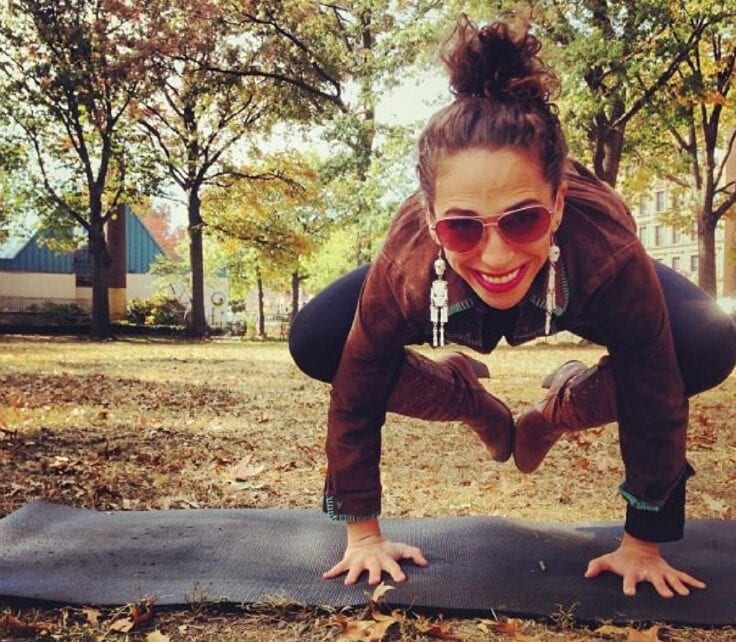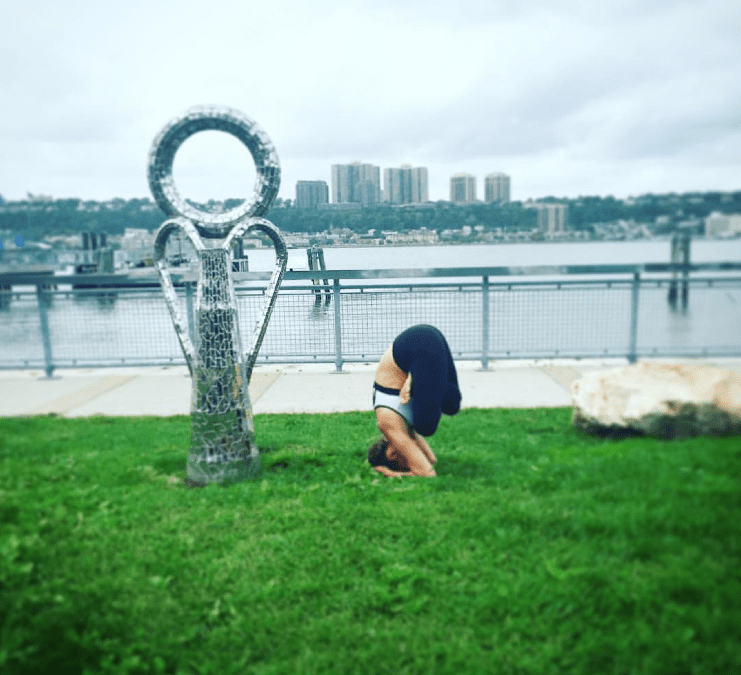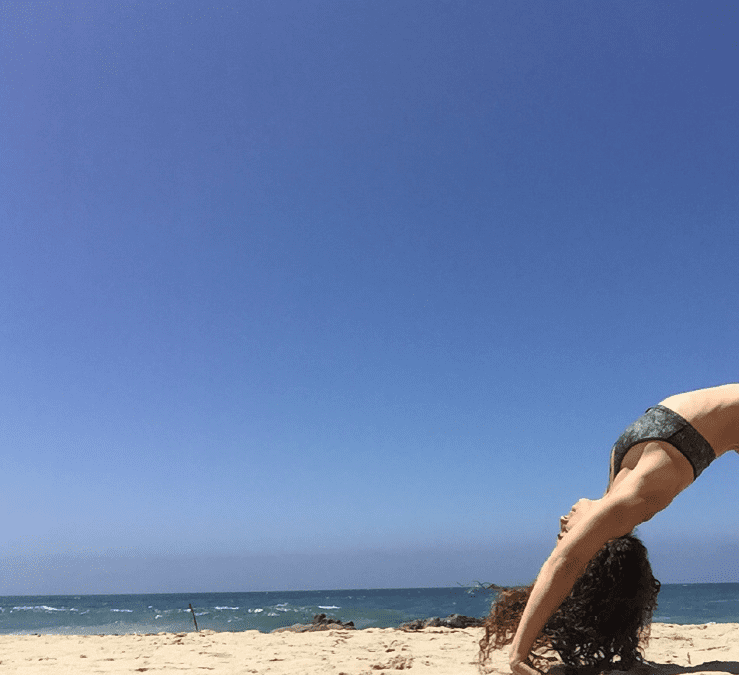
by Lara Land | Oct 26, 2015 | COACHING, POSTON BLOG, SPIRITUALITY, Yoga
“We don’t see things as they are, we see them as we are.” -Anais Nin
If we want things to change we have to change ourselves. Then, suddenly, the world around us appears different. But how can we change ourselves? First we must become aware that there is an option to change. Most of us spend a good deal of our lives adhering to certain decisions about our preferences and characteristics, never questioning where those labels came from or if they are indeed permanent and true.
For instance, I may appear a loud and bossy type. When I come into a room, I let my thoughts be known and assert my desires. Perhaps my whole life I have behaved this way and from this behavior enjoyed much success. I may become known as “loud and bossy” to the point where others around me adjust to take supporting roles and even choose me for activities where those traits appear helpful to the group. I may not realize there is another role I can take. I may have been told that this personality comes naturally to me, but it may just be well practiced, or it may be that I subconsciously feel a need to play a role I was assigned, worried no one else will take that part or that I won’t be effective in another position.
Eventually I will likely be awakened to the malleable nature of personality. I could be faced with a similar personality type across from me and find my usual responses ineffective. I could experience a loss. I could read a book or blog like this one and realize I do have choice. Then I might decide to allow different aspects of myself to come forward until my personality wouldn’t be described as bossy at all. Part of the yogic journey is making better, more artful choices and finally arriving at no choice, but as an experience of our perfect, non-personality touched souls.
The self-help guides tell us to be ourselves, but who are we? Personality is a strange and fluid thing. Most of us have many; Sometimes they war inside of us. Other times they know their roles. Mom comes out at bedtime with the kids, but becomes a shy student in her night classes, hardly recognizable to her mother self. On date night, with girlfriends, with parents, all different personalities emerge.
Sometimes parts of our personalities remain buried for a long time. Suddenly I arrive at a situation where I want to use an archetypal energy but I can not access it. That’s where the costume comes into play. If I’ve been demure for a long time I may need some help expressing my authentic assertive self. In this case I can wear heals, and suits, and certain kinds of colors and hair styles until she comes out. Through the flow or restrictions of her clothing, movement becomes dictated. Through the eyes of those who witness my transformation I access her spirit. She was always there inside of me. Never false. Just hidden. Suddenly the world around me looks different. New possibilities emerge.
Choosing to transform through costume may have to be subtle on the day to day if we don’t want to shock our friends and neighbors, but on Halloween we have the opportunity to go all out. This one day we can access our superhero, magical, sexy, silly, even dark, vampire selves. Each of us has a chance to play a part not allowed to us normally and access a layer of our personality that is hidden away. As we expose more of ourselves we gain more choices and open ourselves to seeing the world around us in a different way. This is a healthy and important part of the journey to self-realization, so be sure to use your societal pass this Halloween and be whoever you most want to be. Don’t be shy. I know I won’t be!

by Lara Land | Oct 13, 2015 | COACHING, SELF-IMPROVEMENT
The seventh of the eight limbs of yoga is Dhyana, or meditation. This state occurs when Dharana (concentration) is held on the same object for some time. Another way to describe this state is that it is made of a string of back to back moments of concentration linked together without interruption. Again and again and again we are only aware of the object of choice.
Different teachers and traditions advise on different objects of concentration. Some suggest focusing on the breath, others the third eye point, and still others put the focus on a Mantra (a repeated sound). Patanjai suggests focusing awareness on one of these things: breath, the sensations of the senses (just feeling), the inner light which is free of pain (most easily felt at the heart center), a mind which has already attained freedom of desire (the mind of a great sage or yogi), the state of dreaming or sleep (not the dreams themselves), or any object which brings a state of stability to the mind of the practitioner.
Through the practice of meditation our mind becomes stabilized and clear like a transparent crystal. The mind in this state is bright and aware, and can come to know any object it puts its attention on. In this clear state the mind is less susceptible to the impressions that create the cycle of karma. It lives in pure consciousness.
I’d love to hear about your meditation. During the month of October, please post your meditation or meditation inspired pictures to Instagram. Tag me at @landyoganyc and hashtag #howimeditate #alleightlimbs and I’ll share your stories.
Meditation techniques should not be forced and are best experienced under the guidance of a teacher and in conjunction with all the previous limbs.

by Lara Land | Aug 19, 2015 | COACHING, SELF-IMPROVEMENT, SPIRITUALITY
I can hardly believe we are up to the sixth limb. For over a year now I’ve been blogging on the limbs and now we have finally reached the final three, known collectively as Samyama. These limbs are the most subtle and internal so I wondered during the year if I’d have something to say about them. I do. Today let’s talk about Dharana.
Dharana may be translated as holding, holding steady, concentration or a single focus. It’s about bringing the mind to one point of attention. Why is this so hard? These days articles are written almost daily about social media, video games, our over stimulated lifestyles, and our inability to concentrate, but what really is going on?
The issue with concentration is not the concentration itself. When we are engaged, all our senses pull toward the object of engagement and we concentrate. The problem is in choosing the object. Concentration by definition means choosing a single object to focus on, to the disregard of everything else. Before we can practice deepening concentration, we must choose a place to put our focus.
Why are we so scared of making a choice? One fear is that we will choose incorrectly. We should understand that avoiding making a choice is much worse than choosing poorly. Firstly, in many instances we can’t choose wrong. There is no actual wrong choice, just different choices that all work out in time. But let’s say we do choose incorrectly. A wrong choice is at least feedback. The moment we sense it is wrong, all we have to do is re-route. We have more information about what other options may not work and can settle more closely on a right choice. Lots of successful people have spoken at length about the power of a mistake and the growth it brings.
Deeper than our fear of making a wrong choice is the fear we have of eliminating options.
We know the whole essence of focusing is attaching ourselves to one thing and leaving all other options behind, so we refuse to choose at all, and instead never fully experience anything. What we don’t realize is that by understanding one thing absolutely completely, we can know all things. Until then, we are just floating around taking no control of our lives. This approach will bring no fulfullment. Our fleeting moments of concentration will be random and even more troubling, will be navigated by the wills of others.
Take comfort in understanding that even in just this one life, we have many lives. Did you know I got my BFA in theatre? I’ve been an actress, writer, director, waitress, insurance agent, and a million and one other things. I’ve had at least three to four fully distinct lives and I plan to have many more.
There is always an opportunity to reinvent, but please make a choice. All the good that comes in life comes after we stop trying and testing and finally make a decision. Some people claim they want to be well informed before they make a commitement to one path. While this has validity, we must recognize when the investigation has become an excuse for indecisiveness. We will never know every variable. In the end we must choose.
What you choose to focus on will grow and thrive more than you can imagine, the second you make it yours, so stop waiting, put your self on one-pointed focus today.

by Lara Land | Aug 5, 2015 | COACHING, SELF-IMPROVEMENT, Yoga
You’re listening to an engaging story, desperately trying to weave a thread through a needle, perhaps deep in a daydream. Whatever it was, we’ve all had the experience of being so in the moment that we fail to hear a siren outside, feel the dog licking our leg, or smell the smoke coming from the kitchen. This is Pratyahara.
It’s rare enough that these moments come on their own but to silence the senses at will requires a serious mastery. First we must be able to control our prana. Consciously drawing the senses away from distraction and inward toward the self is the work we do everyday in Ashtanga Yoga and one of the many reasons I decided to practice and teach this specific lineage. Pratyahara is why though you love a fancy music playlist in class, you may not actually be practicing yoga if you are listening to it. It is why though you may have so much fun looking in the mirror and adjusting your alignment, there is argument that this is also not yoga. Patanjai’s definition of yoga states clearly that we are required to turn our senses inward to become yogis.
In the Ashtanga yoga method this pulling of the senses inward is done by employing a three-pointed focus. First we bring our attention toward the sound of our breath. Next we focus our eyes on one spot and consciously keep them from wandering around. Finally, we feel with every cell, the shape of our body in the pose. This trains our senses to steer inward and keeps us completely present in the moment.
The senses and mind are linked. If we can get mastery of the senses, we can master the mind. Though perfection in Pratyahara happens only after flawlessness is achieved in the limbs which come before it, there is no reason we can’t begin to practice training our senses now. Non reaction to stimuli is an incredibly powerful practice which brings great benefits into our lives. You pass a great sweater in a window of a store. Suddenly you are having this whole silent conversation in your mind about how you could really use a sweater. It’s off season. You haven’t gotten yourself something in awhile. At the end of this mind talk you have given yourself permission to purchase and you think you have done well by “thinking it through”. Truth is you have been scammed by the one who knows you best- your own mind! You never had any intention of purchasing a sweater only your senses dragged you into it! You were perfectly content till they got involved. When you start to observe this process and let the mind know you are into it, the senses will have much less power over you. Keep training your mind to dismiss the cravings. They will stop coming, and you will be free. This is the power of the practice of Pratyahara and the beauty of authentic yoga.
Cravings are the children of habits. Starve off your craving while your mind gets strong. Here are three steps to becoming craving free:
1. Avoid the trigger: If you return home each day at 5pm and immeditely open the kitchen cabinets scavenging for a treat, you’ve been programing your mind to think it’s hungry by the time you walk up to your front door. Take a walk at 5 instead to form a new habit.
2. Give yourself a reward: The 5pm snacks felt to your child self like a deserved reward for a day complete. Substitute with a new reward that gives your heart that full feeling. This could be as simple as sitting in the sun, or a nice long chat with a friend. As long as you feel it and recognize it for the reward it is, it will work.
3. Praise heavily: Make sure to consciously acknowledge yourself each time you make a new choice with positive self talk. “I’m doing a great job making fantastic choices.” Say it out loud for maximum benefit!





Recent Comments